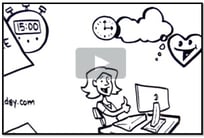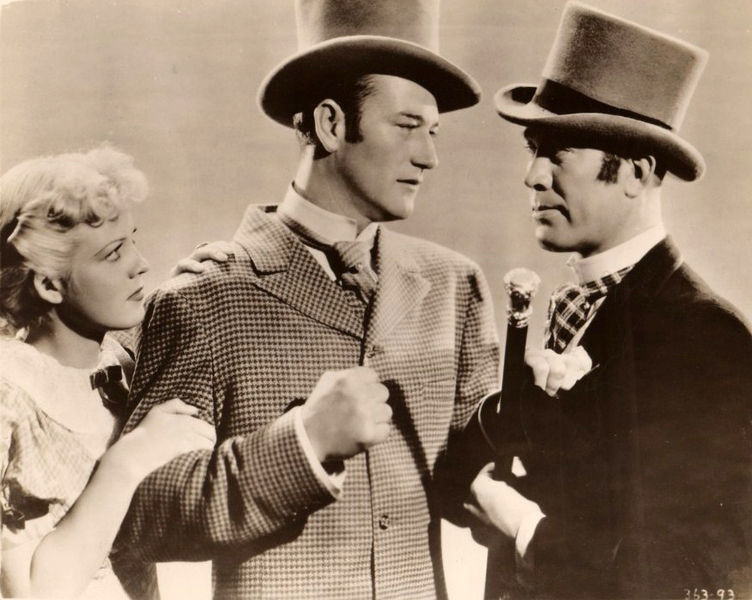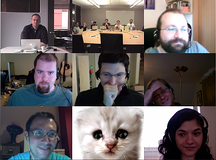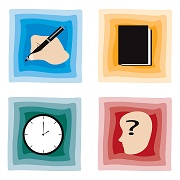 Guest post by SC Moatti
Guest post by SC Moatti
We are all wired with anxieties that get triggered when we least expect them. In fact, psychology professor Roy Baumeister explains that it takes a lot of energy to keep this stress under control. He calls that energy willpower, which is also the title of his best-selling book.
“Some people imagine that willpower is something you only use once in awhile, such as when you are tempted to do something wrong. The opposite is true,” he says. “Most people use their willpower many times a day, all day.”
It all adds up to depletion of energy. That’s when we most feel that we lose control. “Depletion seems to be like turning up the volume on your life as a whole,” Baumeister says.
Great mobile products turn the volume down on our life, and they do it by knowing a lot about us. The more they know about us, the more personalized they get. The more personalized they get, the better able they are to cater to our individual wants and needs.
Sign up for our free webinar May 5, 2016 with SC Moatti, "Human First: How Mobile is Becoming an Extension of Ourselves"
(At the webinar, we'll also be giving away 5 copies of SC's new book, Mobilized!)
By being constantly connected to our environment, mobile products sort through the millions of information bits we are bombarded with to show us only the ones that matter right here, right now. We give them permission to make these decisions on our behalf because they know enough about us to personalize everything.
This personalization is essential to what makes mobile products successful. It puts us in complete control of the experience.
Sometimes, the experience we get from mobile is so personalized that we wouldn’t be able to reproduce it otherwise. Life suddenly gets easier, because we are no longer hampered by circumstances beyond our control. Our stress level goes down, as in this example.

Not too long ago, I had an important meeting with a major partner, and as I was leaving my apartment it started raining. I decided to hail a cab.
Of course, there was no cab in sight. It took me a while to finally find one and by then, I was soaked and already late for my meeting. On top of this, when it came time to pay the fare, I didn’t have enough cash so we had to stop by an ATM.
All I could think about was that I was going to lose my client. I blamed myself for not planning enough. I was upset at the rain for messing up the traffic. But really, I was afraid of losing a significant source of income. All because I couldn’t find a cab.
Now that I started using Lyft and Uber, I no longer get stressed when I need a ride. All I need to do is pull up the service on my phone when I’m getting ready to go somewhere, get in the car when I’m notified that it’s here to pick me up, and get out when I’ve arrived. It optimizes my itinerary in real time by routing around delays that before would have left me stuck in traffic. It even tells me ahead of time how much the fare will be. I no longer even need to “pay” in the traditional sense, because the fare is automatically charged to my credit card. I feel cared for, even pampered, because the service eliminates all the previous hassle of getting from point A to point B. It feels good.
Feeling taken care of in ways we cannot provide to ourselves is a reflection of what is important to us, of what has inner meaning to us. A bond naturally develops from this extreme personalization, similar to any relationship. This connection lifts our spirit, not unlike intense feelings such as love. And what gives us more meaning than being in love?
To learn more about the formula for mobile success, including how to apply it to your own company, read my book, mobilized: an insider’s guide to the business and future of connected technology, visit scmoatti.com, or join us at the free webinar May 5!












 by Lorraine Segal
by Lorraine Segal_1.jpg?width=450&height=359&name=752px-conflict_(1936)_1.jpg)

 David Sibbet is a world-reknowned visualization expert and author of the new book Visual Leaders: New Tools for Visioning, Management, and Organization Change. He will be presenting at our
David Sibbet is a world-reknowned visualization expert and author of the new book Visual Leaders: New Tools for Visioning, Management, and Organization Change. He will be presenting at our  David Sibbet: Visual practice is using the tools of design thinking and graphic design interactively—much like one uses spoken words. Where once these ways of working were focused on design itself, the methods are now used by leaders and facilitators to support meetings, teams, and organization change processes. Visual practice includes graphic recording of meetings, visual facilitation of meetings and teams, and use of many kinds of media on the part of leaders to collaboratively develop visions, processes, and plans.
David Sibbet: Visual practice is using the tools of design thinking and graphic design interactively—much like one uses spoken words. Where once these ways of working were focused on design itself, the methods are now used by leaders and facilitators to support meetings, teams, and organization change processes. Visual practice includes graphic recording of meetings, visual facilitation of meetings and teams, and use of many kinds of media on the part of leaders to collaboratively develop visions, processes, and plans. Collaborating with others is crucial for getting meaningful goals accomplished, especially in today’s work environment where we are increasingly interdependent on each other. Trying to be collaborate all the time however, responding to incoming requests as they come in, being constantly available and responsive on e-mail and Instant Messaging and ad-hoc interactions, would leave us drained and would be at the detriment of our individual focused effort, not to mention that it would also reduce the effectiveness of our collaborative effort. So how can we solve this puzzle and fully leverage our collaborative effort while staying energized and maintaining our ability to focus, imagine, and create?
Collaborating with others is crucial for getting meaningful goals accomplished, especially in today’s work environment where we are increasingly interdependent on each other. Trying to be collaborate all the time however, responding to incoming requests as they come in, being constantly available and responsive on e-mail and Instant Messaging and ad-hoc interactions, would leave us drained and would be at the detriment of our individual focused effort, not to mention that it would also reduce the effectiveness of our collaborative effort. So how can we solve this puzzle and fully leverage our collaborative effort while staying energized and maintaining our ability to focus, imagine, and create? I belong to this organization (its name to remain anonymous) and it was time to renew my membership recently. I was asked to fill out the membership application again (same application that we filled out last year). Being the productivity and efficiency evangelist that I am, I couldn’t “digest” that request very well. So I objected and questioned why we would be asked to submit the same information again! Shouldn’t we all be focused on doing work that has some purpose after all?
I belong to this organization (its name to remain anonymous) and it was time to renew my membership recently. I was asked to fill out the membership application again (same application that we filled out last year). Being the productivity and efficiency evangelist that I am, I couldn’t “digest” that request very well. So I objected and questioned why we would be asked to submit the same information again! Shouldn’t we all be focused on doing work that has some purpose after all? If you haven't explored Virtual Worlds yet, or if you have but still seeking more ways to leverage them, the observations below, from one of the workshops that I conducted in Second Life, shed some light on how Virtual Worlds can provide virtual teams with unique experiences and benefits that aren't otherwise possible. Keep on reading!
If you haven't explored Virtual Worlds yet, or if you have but still seeking more ways to leverage them, the observations below, from one of the workshops that I conducted in Second Life, shed some light on how Virtual Worlds can provide virtual teams with unique experiences and benefits that aren't otherwise possible. Keep on reading!
